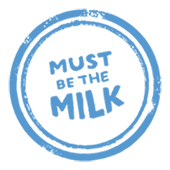Lately, you may have heard terms like “fermented” and “probiotic” used to describe foods that may have a positive impact on our digestive health. Despite the similarities that exist between them, these words do not mean the same thing. In this blog post, we discuss the differences between “fermented” and “probiotic” foods, and how they are connected.
Probiotics
“Live microorganisms which when administered in adequate amounts confer a health benefit on the host” – Definition of probiotics, Food and Agriculture Organization (FAO) of the United Nations and World Health Organization (WHO), updated in 2014.1
Probiotics have, and continue to be, a hot topic when it comes to gut health. Probiotics are live microorganisms (in this case, mostly bacteria) that are intended to have health benefits.2 Probiotics work to support health by promoting the growth of “good” bacteria in our gut. They can be consumed in foods, taken as supplements, and more.
In order to be considered a probiotic, the microorganisms must2,3
- Be live at the time of consumption, and
- Be proven, through research, to promote health when consumed in adequate amounts
Consuming a food that contains probiotics provides the added benefit of the other nutritional components in that food—like yogurt for example, which contains probiotics plus essential nutrients like calcium, protein, phosphorus, B vitamins, and zinc.5

Based on the available body of high-quality research, we know that certain probiotics may help maintain normal bowel function during infection or antibiotic use, and in people with Irritable Bowel Syndrome (IBS).2 Probiotics may also help to support our immune system, promote a healthy respiratory tract, and more, however more research is needed to further understand these connections.6
Fermented Foods
“A fermented food or beverage is a type of food made by extensive microbial growth.”—Definition of fermented foods, International Scientific Association for Probiotics and Prebiotics7

Fermented foods are all the rage these days (think yogurt, kefir, and kimchi). Aside from adding a unique, tangy flavor, the fermentation process may also result in the addition of “good” bacteria that support gut health.7
Fermentation occurs when microorganisms convert carbohydrates (sugars) into either alcohol or an acid.8 Live microorganisms may be present in the food after the fermentation process takes place, and they may not, depending on how the food is processed for consumption. See Table 1 for examples of both types of fermented foods. 9
Yogurt is a fermented, probiotic food
Yogurt is made by adding bacteria to milk, which over time, changes the lactose (natural sugar found in milk) to lactic acid through fermentation.10 This process changes the texture and flavor to be thick and tangy, characteristics we typically associate with yogurt.
The bacteria added to milk to ferment it also decreases the amount of lactose present, which is why some people with lactose-intolerance are able to consume yogurt without experiencing discomfort. This characteristic, along with the fact that live bacteria remain present in the yogurt after the fermentation process has occurred, makes yogurt a probiotic food. 2
What’s the bottom line?
Probiotics are live microorganisms whose health-promoting properties have been well-studied. The process of fermentation can lead to the presence of probiotics in foods, but not all fermented foods contain probiotics. It’s possible that non-probiotic bacteria created as a result of the fermentation process may still promote growth of “good” bacteria in our gut, but more research is needed.

For more information related to this topic, check out our blogs on fermented dairy and prebiotics. We also have this guide to making homemade kefir.
References
- Hill C, Guarner F, Reid G, Gibson GR, et al. The International Scientific Association for Probiotics and Prebiotics consensus statement on the scope and appropriate use of the term probiotic. Nature Reviews Gastroenterology & Hepatology. 2014; 35:506-514. https://www.nature.com/articles/nrgastro.2014.66?foxtrotcallback=true#article-info. Accessed December 7, 2018.
- Probiotics: In Depth. National Center for Complementary and Integrative Health website. https://nccih.nih.gov/health/probiotics/introduction.htm#hed2. Updated October 2016. Accessed December 7, 2018.
- Campbell K. Your guide to the difference between fermented foods and probiotics. Gut Microbiota for Health website. https://www.gutmicrobiotaforhealth.com/en/guide-difference-fermented-foods-probiotics/. Updated July 26, 2017. Accessed December 7, 2018.
- Miller G. Ask Dr. Dairy: What’s the Difference Between Fermented and Probiotic Foods? DairyGood website. https://dairygood.org/content/2017/ask-dr-dairy-whats-the-difference-between-fermented-and-probiotic-foods. Accessed December 7, 2018.
- Is yogurt good for you? DairyGood website. https://dairygood.org/content/2017/is-yogurt-good-for-you. Accessed December 11, 2018.
- Sanders M. Probiotics. International Scientific Association for Probiotics and Prebiotics website. https://isappscience.org/probiotics/. Accessed December 7, 2018.
- Hutkins R. Fermented Foods. International Scientific Association for Probiotics and Prebiotics website. https://isappscience.org/fermented-foods/. Accessed December 7, 2018.
- Helmenstine A M. What Is Fermentation? ThoughtCo website. https://www.thoughtco.com/what-is-fermentation-608199. Updated December 29, 2017. Accessed December 11, 2018.
- Fermented Foods. International Scientific Association for Probiotics and Prebiotics website. https://4cau4jsaler1zglkq3wnmje1-wpengine.netdna-ssl.com/wp-content/uploads/2016/01/FermentedFoods_outline_rev1029.pdf. Accessed December 11, 2018.
- How is yogurt made? DairyGood website. https://dairygood.org/content/2017/how-is-yogurt-made. Accessed December 11, 2012.

